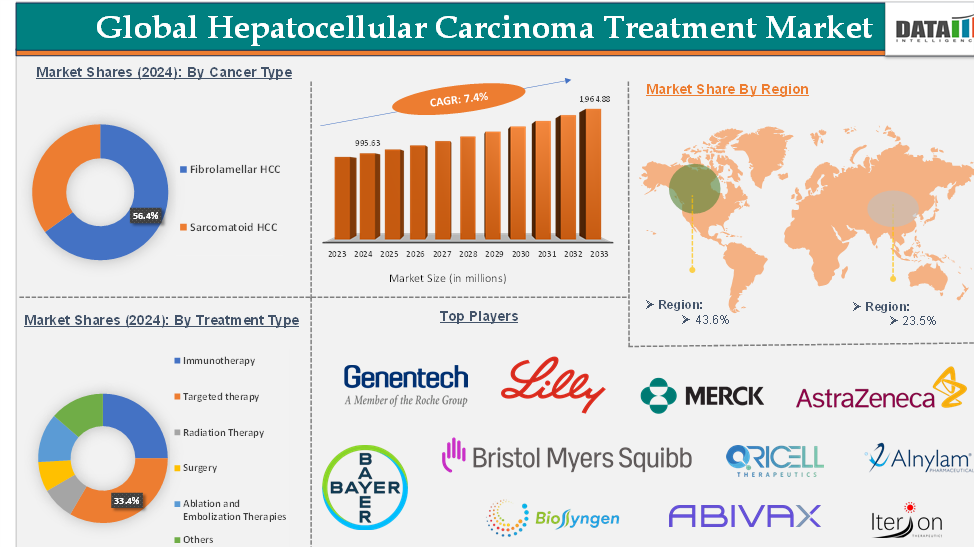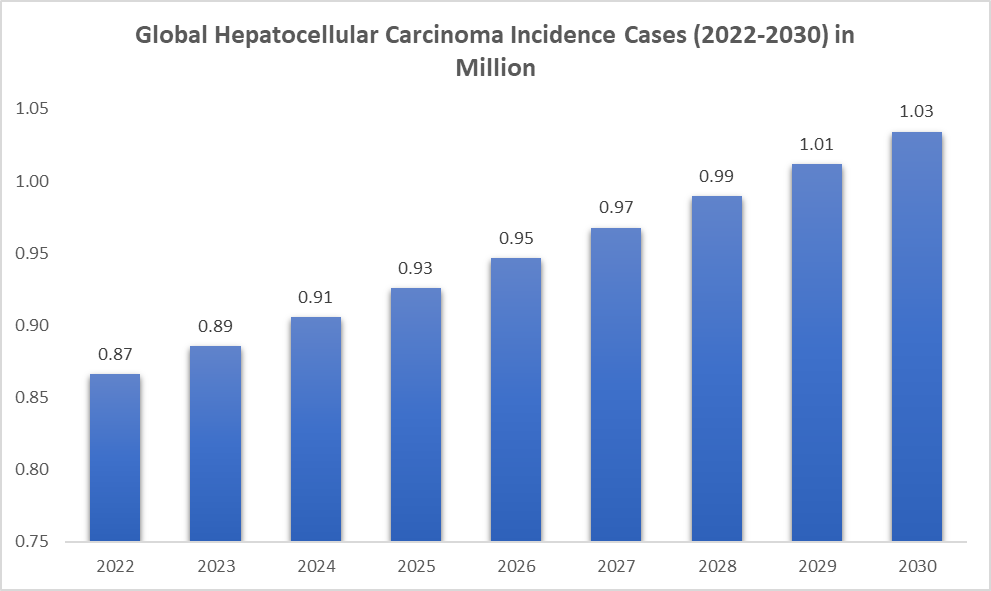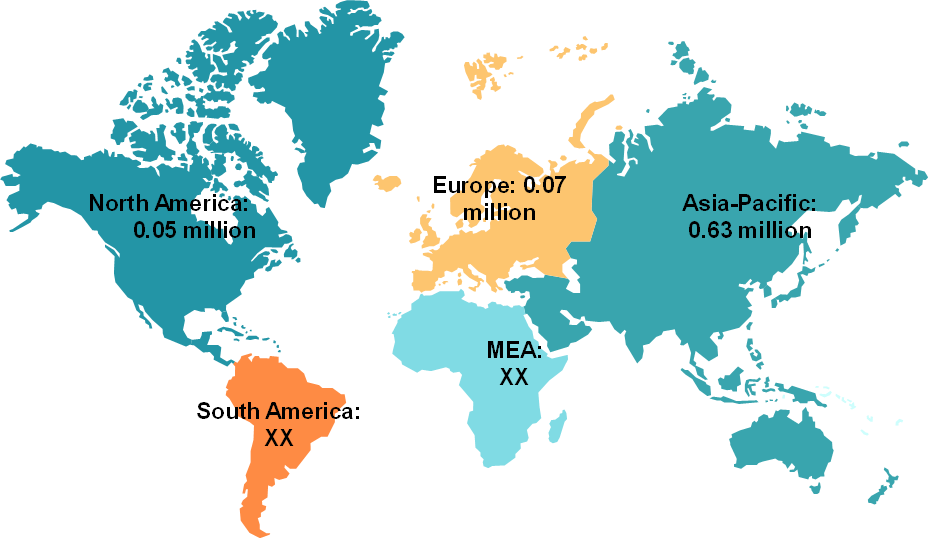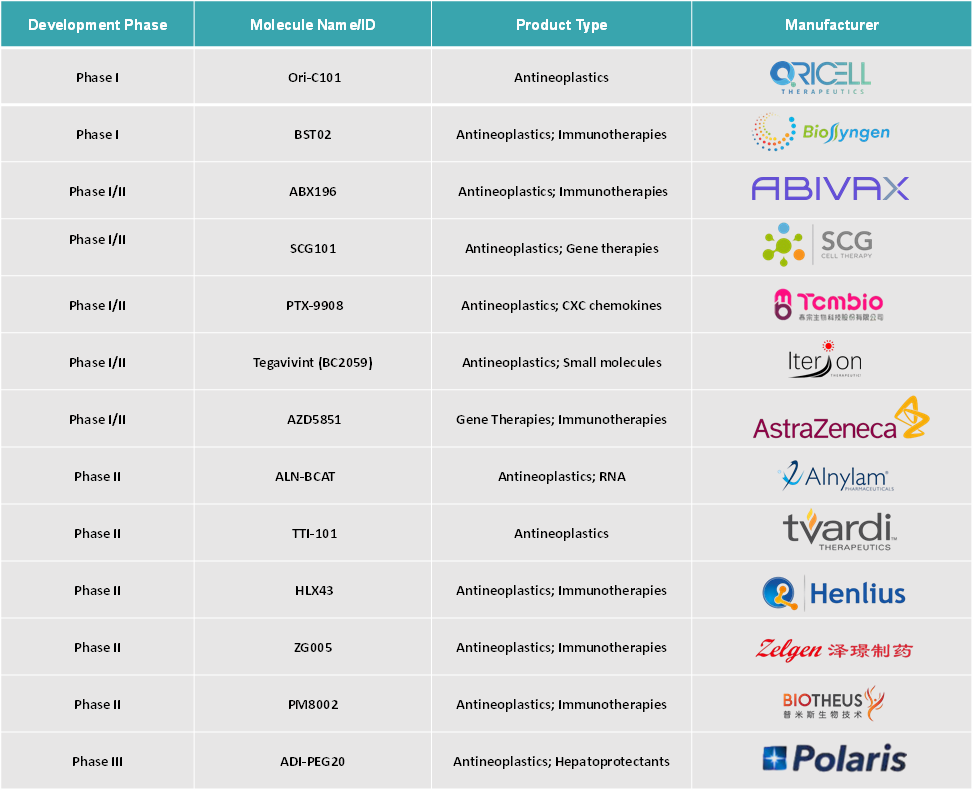Hepatocellular Carcinoma Treatment Market Size
Hepatocellular Carcinoma Treatment Market size reached US$ 995.63 million in 2024 and is expected to reach US$ 1,964.88 million by 2033, growing at a CAGR of 7.4% during the forecast period 2025-2033.
Hepatocellular carcinoma (HCC) is the most prevalent form of liver cancer, originating from the liver’s primary cells known as hepatocytes. Management strategies for HCC depend on the cancer’s stage, the patient’s overall health, and additional clinical factors. Treatment options may include surgical resection, liver transplantation, local ablation techniques, chemotherapy, immunotherapy, and targeted therapies.
Key industry trends include a pronounced shift toward immunotherapies, especially immune checkpoint inhibitors, due to their improved survival outcomes and reduced side effects compared to traditional chemotherapies. Combination therapies and precision medicine approaches are gaining traction, with ongoing research focusing on patient stratification and personalized treatments. The integration of artificial intelligence in diagnostics and treatment planning is also enhancing early detection and tailored therapy strategies.
Major drivers for market growth include increasing global prevalence of liver cancer, particularly due to chronic liver diseases, hepatitis B and C, and non-alcoholic fatty liver disease (NAFLD). Enhanced awareness and screening leading to earlier diagnosis and higher demand for effective treatments, and technological advancements in imaging, liquid biopsy, and AI-powered diagnostics
Opportunities lie in expanding access to innovative therapies in emerging markets, the development of novel immunotherapy and targeted drug combinations, and the growing focus on patient-centric, minimally invasive treatments.
Executive Summary

For more details on this report, Request for Sample
Hepatocellular Carcinoma Treatment Market Dynamics: Drivers & Restraints
Rising Prevalence of Hepatocellular Carcinoma (HCC)
The global burden of hepatocellular carcinoma (HCC) is rising sharply, making it a major public health concern. HCC is the most common form of primary liver cancer, as per National Center for Biotechnology Information (NCBI) data in June 2023, accounting for approximately 90% of all liver cancer cases worldwide. The incidence of HCC is projected to surpass one million new cases annually by 2025, reflecting a steady increase in recent decades.
The incidence of hepatocellular carcinoma (HCC) is projected to rise steadily over the next 30 years, reflecting a growing global health challenge. According to the Global Cancer Observatory, HCC ranked as the sixth most commonly diagnosed cancer and the third leading cause of cancer-related deaths worldwide in 2022, with incidence rates expected to increase further in both men and women.
In India, the Global Cancer Observatory reports a relatively low age-standardized incidence rate for HCC at 2.7 per 100,000 population. However, mortality rates are disproportionately high, with the Indian Council of Medical Research (ICMR) estimating HCC mortality at 6.8 per 100,000 population. Recent registry data also indicate that while incidence, prevalence, and mortality rates for HCC in India remain lower than global averages, these rates are rising, particularly in certain regions and among women. This trend underscores the urgent need for enhanced surveillance, prevention, and early detection strategies to address the increasing burden of HCC in both India and worldwide.
Lack of Effective Biomarkers
One of the most significant challenges restraining the growth and effectiveness of the global hepatocellular carcinoma (HCC) treatment market is the lack of reliable molecular biomarkers to guide therapy selection and predict treatment response. Currently, systemic therapies for advanced HCC often demonstrate limited efficacy, in part because clinicians are unable to accurately identify which patients are most likely to benefit from specific drugs.
While several potential biomarkers-such as PD-1, PD-L1, CD3, and CD8-have been explored for their predictive value in immunotherapy, their clinical utility remains inconsistent. For example, although positive PD-L1 expression is associated with a higher objective response rate (ORR) to PD-1/PD-L1 inhibitors in HCC, a substantial proportion of patients with high PD-L1 expression still do not respond to treatment, and some patients with low or negative PD-L1 expression do benefit.
This variability is further complicated by the dynamic and multifactorial regulation of PD-L1, which can be influenced by tumor-intrinsic factors and the tumor microenvironment, making it an unreliable standalone biomarker for clinical decision-making.
Hepatocellular Carcinoma Treatment Market - Epidemiology Analysis
The rising incidence of HCC presents significant challenges in the global healthcare landscape. As per DataM intelligence estimates, particularly as its incidence is expected to increase from an estimated 0.91 million prevalent cases in 2024 to 1.03 million by 2030. This trend highlights the growing need for effective interventions, particularly in regions where HCC cancer rates are more pronounced, such as in developing countries and among high-risk populations.
Early detection, better treatment options, and advancements in healthcare systems in developed countries have improved outcomes, but significant challenges remain in developing nations. Addressing these disparities and fostering innovation in treatment options will be crucial for managing the growing burden of HCC cancer globally.

Hepatocellular Carcinoma Treatment Market - Epidemiology Analysis (By Region)

Hepatocellular Carcinoma Treatment Market - Pipeline Analysis
Top Phase Pipeline Products for HCC:

Hepatocellular Carcinoma Treatment Market - Segment Analysis
The global hepatocellular carcinoma treatment market is segmented based on cancer type, treatment type, and region.
Treatment Type:
The targeted therapy segment was valued at US$ 8,002.72 million in 2024 and is estimated to reach US$ 17,124.58 million by 2033, growing at a CAGR of 7.8% during the forecast period from 2025-2033
Targeted therapy has revolutionized the treatment landscape for hepatocellular carcinoma (HCC), the most prevalent form of liver cancer. These therapies are designed to interfere with specific molecular targets involved in tumor growth and progression, offering a more precise approach than conventional treatments.
HCC pathogenesis is often driven by aberrant signaling pathways, including vascular endothelial growth factor receptor (VEGFR), platelet-derived growth factor receptor (PDGFR), fibroblast growth factor receptor (FGFR), and hepatocyte growth factor receptor (c-MET). Targeted therapies aim to inhibit these pathways, thereby impeding tumor angiogenesis, cell proliferation, and survival. By selectively blocking these molecular targets, targeted therapies can effectively suppress tumor growth with potentially fewer side effects than traditional chemotherapy.
Targeted therapies have significantly advanced the treatment of HCC, offering more personalized and effective options for patients. Ongoing research and clinical trials continue to expand the arsenal of targeted agents, potentially improving outcomes for individuals affected by this challenging disease.
Global Hepatocellular Carcinoma Treatment Market - Geographical Share
The North America hepatocellular carcinoma treatment market was valued at US$ 436.09 million in 2024 and is estimated to reach US$ 940.63 million by 2033, growing at a CAGR of 7.9% during the forecast period from 2025-2033
North America is projected to maintain a dominant position in the global hepatocellular carcinoma treatment market, driven by several key factors includes high incidence and mortality rates as per Journal of Clinical and Translational Hepatology data in January 2024, between 2001 and 2020, a total of 467,346 patients were diagnosed with hepatocellular carcinoma (HCC) in the United States, with women comprising 26.0% of these cases.
During this period, HCC incidence rates increased in both sexes among women, rates rose from 2.38 per 100,000 population in 2001 to 3.09 per 100,000 in 2020, and among men, from 7.32 to 9.82 per 100,000. Despite these increases, there was no significant difference in the rate of change between men and women. Despite recent projections for HCC remains a major health concern, contributing to substantial morbidity and mortality. This high incidence underscores the urgent need for effective treatment options and drives market demand.
North America's well-established healthcare infrastructure facilitates the rapid adoption of innovative treatments. The region boasts state-of-the-art medical facilities, a robust regulatory framework, and a high level of healthcare access, ensuring that patients receive timely and effective care. These factors contribute to the region's leading position in the hepatocellular carcinoma treatment market.
For instance, in April 2025, the U.S. Food and Drug Administration (FDA) approved the combination of nivolumab (Opdivo) and ipilimumab (Yervoy) as a first-line treatment for adult patients with unresectable or metastatic hepatocellular carcinoma (HCC).
The presence of major pharmaceutical companies and research institutions in North America accelerates the development of novel therapeutics. Ongoing research and clinical trials lead to the introduction of advanced treatment options, including targeted therapies and immunotherapies, enhancing patient outcomes and expanding market opportunities.
The Asia-Pacific hepatocellular carcinoma treatment market was valued at US$ 233.59 million in 2024 and is estimated to reach US$ 519.72 million by 2033, growing at a CAGR of 8.2% during the forecast period from 2025-2033
The Asia-Pacific hepatocellular carcinoma (HCC) treatment market is experiencing rapid growth, driven by several key factors, including the rising Incidence of liver cancer. Countries like China and Japan have some of the world’s highest rates of liver cancer, largely due to the prevalence of chronic hepatitis B and C infections.
Significant investments in R&D, especially in Japan, are leading to the development of innovative therapies and clinical trials. Japanese agencies, such as the Japan Agency for Medical Research and Development (AMED), are actively promoting immunotherapy research for HCC. There is a strong shift toward immunotherapy and targeted therapies, with immunotherapy now representing nearly half of the systemic treatment market share for unresectable HCC in the region.
The use of AI-assisted imaging, liquid biopsies, and biomarker-driven strategies is improving early detection and enabling tailored treatments, particularly in technologically advanced markets like Japan and South Korea.
Japan plays a critical role in this market due to its high disease burden, robust pharmaceutical industry, and leadership in clinical innovation. The Asia-Pacific HCC treatment market is forecasted to register a strong CAGR, with Japan remaining a key contributor to both market size and the advancement of new therapies.
Hepatocellular Carcinoma Treatment Market - Competitive Landscape (Major Players)
Top companies in the hepatocellular carcinoma treatment market include Eli Lilly and Company, AstraZeneca, Eisai Inc., TAIHO ONCOLOGY, INC., Bayer AG, Bristol-Myers Squibb Company., Incyte, Genentech USA, Inc., Exelixis, Inc., and Merck & Co., Inc., among others.
Hepatocellular Carcinoma Treatment Market - Competitive Landscape (Emerging Players)
Emerging players in the hepatocellular carcinoma treatment market include Oricell Therapeutics, Biosyngen, Abivax SA, SCG Cell Therapy Ptd Ltd, TCM Biotech International Corp., ITERION THERAPEUTICS, INC., Alnylam Pharmaceuticals, Inc., Shanghai Henlius Biotech, Inc., and Tvardi Therapeutics, Inc., among others.
Hepatocellular Carcinoma Treatment Market Key Developments
- In April 2025, the U.S. Food and Drug Administration (FDA) approved the combination of nivolumab (Opdivo) and ipilimumab (Yervoy) as a first-line treatment for adult patients with unresectable or metastatic hepatocellular carcinoma (HCC).
- In February 2024, the U.S. Food and Drug Administration (FDA) granted Fast Track Designation to BST02, an investigational T-cell therapy developed by Biosyngen, for the treatment of all forms of liver cancer, including hepatocellular carcinoma (HCC) and cholangiocarcinoma. This designation aims to expedite the development and review processes for therapies addressing serious conditions with unmet medical needs.
Market Scope
| Metrics | Details | |
| CAGR | 7.4% | |
| Market Size Available for Years | 2022-2033 | |
| Estimation Forecast Period | 2025-2033 | |
| Revenue Units | Value (US$ Mn) | |
| Segments Covered | Cancer Type | Fibrolamellar HCC, Sarcomatoid HCC |
| Treatment Type | Immunotherapy, Targeted therapy, Radiation Therapy, Surgery, Ablation and Embolization Therapies, Others | |
| Regions Covered | North America, Europe, Asia-Pacific, South America, and the Middle East & Africa | |